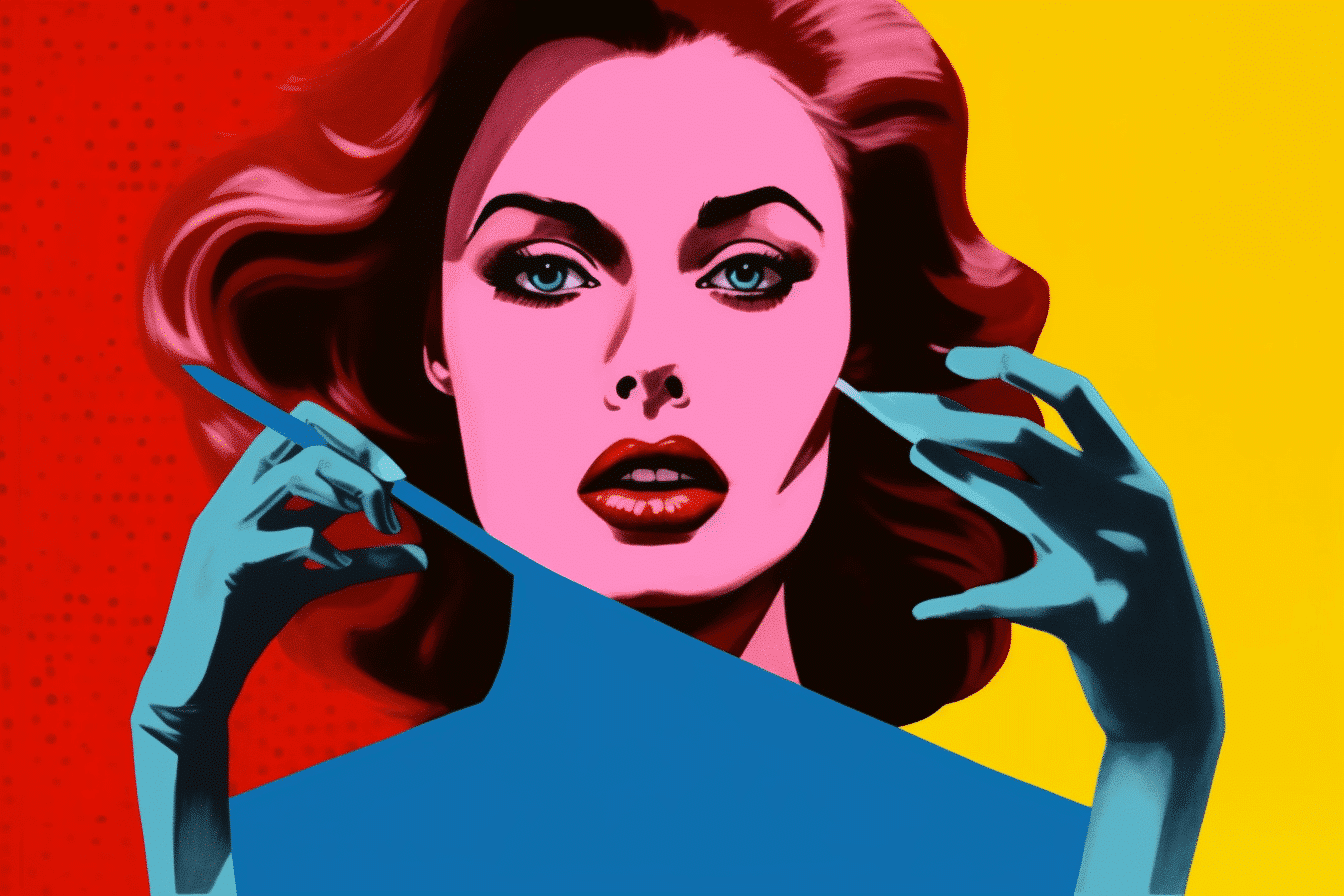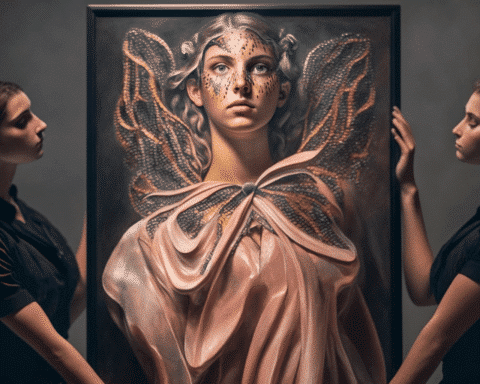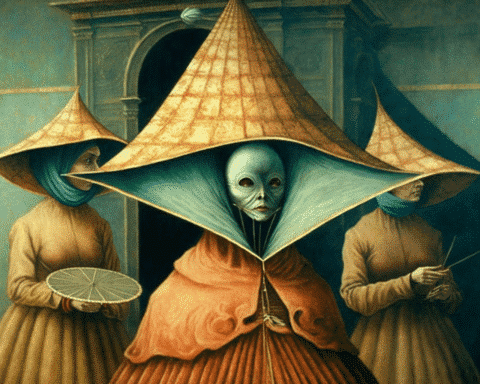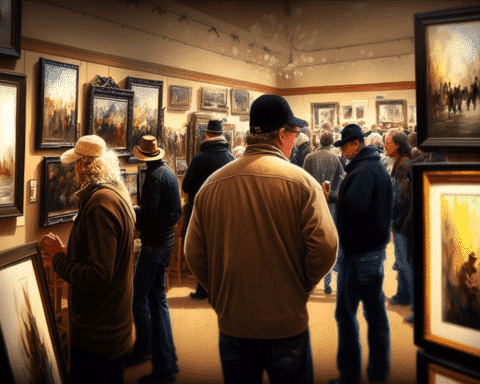Evelyne Axell, a Belgian artist with a radical yet fleeting career, exalted the feminine form through striking enamel illustrations steeped in psychedelic colour palettes. Her portraits presented naked women lounging in vivid fields of acid green or cerulean blue under vast skies. In some cases, the line between subject and scenery blurred as bands of colour morphed into the shape of a hairstyle and tufts of grass transformed into pubic hair.
Axell relished dual interpretations. Her most renowned creation depicting a woman savouring an ice cream cone could be viewed as an innocuous summertime promotion or an overtly pornographic image. She named another piece, which portrayed red heels on a gas pedal, “Axell-ération”— a subtle self-portrait, much like her other works.
However, the young actress turned Pop artist, who flourished in the 1960s and early ’70s under the tutelage of renowned surrealist René Magritte, experienced a truncated career. In 1972, just a few years into her painting journey, she was killed in a car accident and fell into relative oblivion. It wasn’t until the past decade that curators revisited the pop art movement beyond its well-known male proponents, such as Andy Warhol, Roy Lichtenstein, and Richard Hamilton, and acknowledged Axell as one of several women artists using mass media to confront the social constructs and politics of the ’60s.
“The mention of a female pop artist would likely draw a blank from most people,” commented Catherine Morris, a curator at the Brooklyn Museum, which staged the travelling exhibition “Seductive Subversion: Women Pop Artists, 1958–1968” in 2011. This pivotal group show showcased Axell and her contemporaries, such as Pauline Boty and Chryssa.
Morris continued, suggesting that had the rise of women Pop artists occurred even a few years later, public awareness would likely have been greater, citing the 1970s as a transformative period for female artists following the onset of second-wave feminism. “This entire cadre of women artists spanning this decade was substantially overlooked.”
Since “Seductive Subversion” first premiered at The University of the Arts in Philadelphia, Axell’s work has been featured in numerous critical group exhibitions that offer a more comprehensive, global perspective of pop art while highlighting female artists. A significant posthumous achievement was the Museum of Modern Art in New York, adding “Axell-ération” to its collection in 2021. However, solo exhibitions remain scarce, with retrospectives hosted by Museum Abteiberg in western Germany and the remote Swiss Alps art center Muzeum Susch separated by a decade. This may be partially attributed to her limited portfolio.
Now, two of Axell’s whimsical, erotic works — crafted using her characteristic enamel on plexiglass technique — are set to make history at Christie’s in her first significant New York auction. “Paysage,” a dreamy pastoral nude, is predicted to exceed her record of $140,000, set in 2017, with a high estimate of $200,000; “L’Amazone,” a sensual blue-ombre portrait, could also come close at $120,000. But according to Sara Friedlander, Christie’s deputy chairman of post-war and contemporary art, such sales for Axell are uncommon.
Friedlander stated, “She created very few pieces — she was only 37 when she died,” adding that “the market struggles to categorize her due to a lack of work. These paintings are exceptional and exceedingly rare.”
Legacy Yet to Be Fulfilled The decade after Axell’s death saw the rise of several women artists who forthrightly expressed female sexuality, portrayed their bodies, and subverted erotic or pornographic images. Artists like Joan Semmel and Marilyn Minter argued for an inclusive feminism that embraced sexual autonomy, but, as Morris elaborated, they faced criticism for their approach.
She explained, “Feminist artists who came to the fore in the 1970s and into the 1980s and 90s were often scrutinized by mainstream feminism for their use of their sexuality, bodies, and attractiveness.”
Axell could have been part of this critical wave; examining her forward-thinking feminist ideas, set in her idealized world, is still underway. However, after facing mockery from male art critics, she concealed her identity, signing her works with just her surname, as revealed by the exhibition at Muzeum Susch. Morris notes that her unique style — a blend of pop art and dreamy surrealism — remains undervalued.
Morris says, “She is a historical bridge between surrealism and pop art, which is a largely unexplored concept.”
Adept at challenging norms about her beauty, sexuality, and identity in her art, Axell was also politically active, producing portraits of African American activist Angela Davis and a painting in response to the 1970 Kent State campus shootings.
In a publication by Muzeum Susch, quoting her only 1970 interview, Axell stated, “Above all, my universe is filled with unconditional love for life. My subject is clear: the experimentation of nudity and femininity in a utopia of bio-botanical freedom, free from frustration or gradual submission, accepting only the boundaries it sets for itself.”
One of Morris’ favoured works shown at the Brooklyn Museum encapsulates this ethos: an abstracted view of a woman’s torso, her body contours appearing as peaks and valleys, her vulva adorned with a genuine patch of green fur. Titled “Petite fourrure verte” or “Small green fur,” the intimate viewpoint was based on a photograph taken by Axell’s filmmaker husband, Jean Antoine.
Morris added, “It’s from 1970, just a couple of years before her death, and for me, it embodies what could have been — what was on the horizon.”
Despite the scarcity of her work and the brevity of her career, Evelyne Axell’s provocative exploration of femininity and sexual liberation has left a significant imprint on the landscape of Pop Art. As her pieces fetch record prices and curators worldwide continue to delve into her unique fusion of surrealism and pop culture, her legacy promises to expand and gain the recognition it deserves. The gift of Axell, the trailblazer of erotic pop art who tragically died on the cusp of fame, is a compelling reminder of the often-overlooked contributions of female artists to the broader art narrative.




